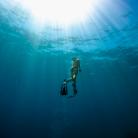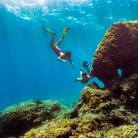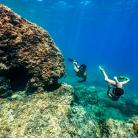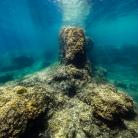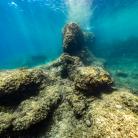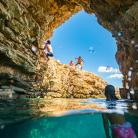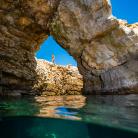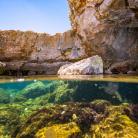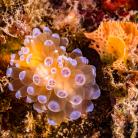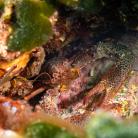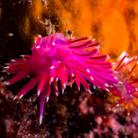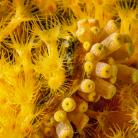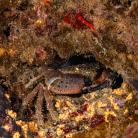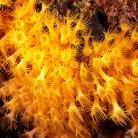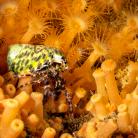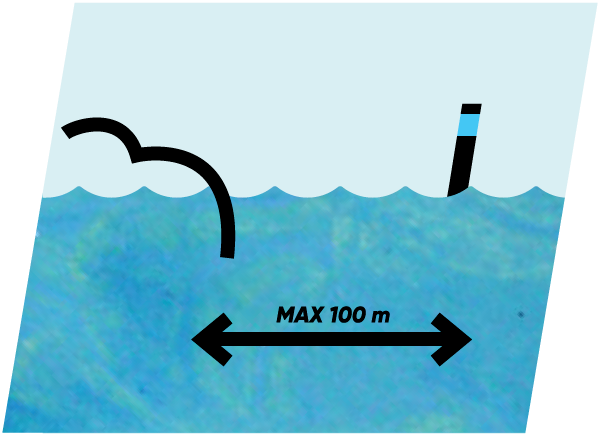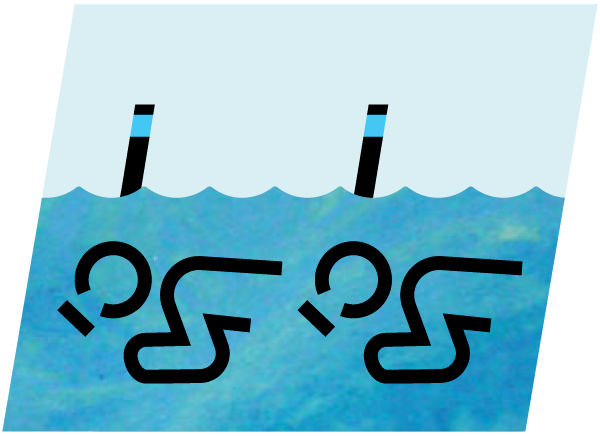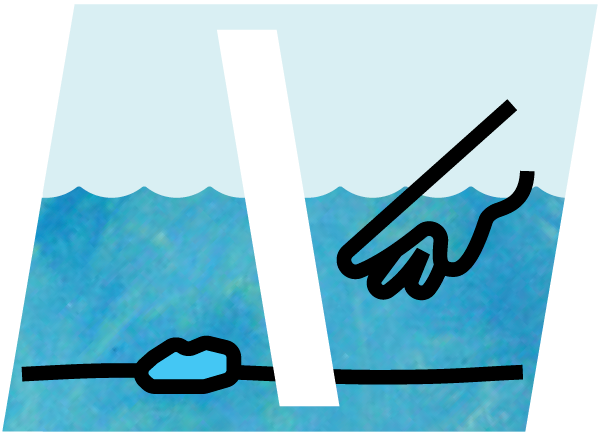Prirodno
Prirodno (Natural) snorkelling site is located on the east coast of the Arena Stoja Campsite in Pula. The beautiful camp is situated on the Stoja peninsula, which, if you look at it from the air in the direction of the Brijuni Islands, resembles a jumping dolphin with a tail which fins form two access roads, while the dorsal fin point at the Muzil gorges. Local population has always called this rocky beach Prirodno (Natural), probably because of its magnificent, natural beauty.
You can get to the Prirodno location by walking along the circular road that curves around the Austro-Hungarian fortress in the east, passing through a grove of Mediterranean pine trees, overlooking the Splendid Resort and Grand Park Hotel Brioni on another of Pula's peninsulas, Verudela. However, perhaps the easiest way to reach our snorkelling location is to walk along the shore from the neighbouring Stoja City bathing area, and after passing the water sports pier, continue scrambling on the rocks for the next 200 meters.
One cannot miss the location because Prirodno is a unique place in Pula that is unprecedented for its interesting geomorphological shape - a stone bridge. It is incredible that on the very stretch from Prirodno towards the flat slabs, some 100 meters away, you can find three semi-open caves on dry land, two of which are penetrated by the sea. You can explore them all by careful climbing or careful diving.
You can start swimming in this snorkelling location in front of the stone bridge because when in water you will enjoy the most beautiful view of it. A small channel with an initial depth of 4 meters takes you under a stone bridge. A yellow wall is hidden at the bend, which owes its colour to blooming cnidarians. In the early morning, the entire arch under the bridge looks gilded, partly from the dawn, partly from their reflection. If you continue to the end of the channel, the depth decreases to 2 meters, and you come to a submerged passage in which a small air space is created during low tide. This tunnel is about a meter and a half long and leads into a new pool filled with sea and strewn with large rocks. There is a half-open cave in the rock.
Returning to the beginning of the channel, you continue the itinerary along the right side, and following the shoal, you will discover, at a depth of one meter, a longer roof under which sponges of various colours, woody bryozoans resembling corals and orange cnidarians are hiding. Rocks in this part descend in a step-like fashion to a depth of 7 meters.
Continuing further, you will come across a bottom strewn with stones in the form of a sunken cove, which at a depth of 4 meters has a roof that hides a small coral grove in its shadow. There is colourful life in every crevice in the rocks. Here hides a warty crab that wears an orange sponge on its back. It most often climbs the ceiling under the sea roofs. You can find various types of small snails that adorn the rocks of this location with their incredible colours.
If you are more curious and can dive a little deeper, at the end of this underwater reef there is a wall that drops from 6 to 11 meters of depth. It is full of crevices that abound in various types of false coral. The next reef is a real surprise because from a distance it looks like a big fish with an open mouth and an eye through which you can peek to the other side. Behind this fish reef is the entrance to a small, shallow lagoon with a soft blanket of brown algae, like a carpet, ending in a half-open cave.
Going back, you will notice bare rocks, stripped of sea urchins, with clearly visible holes which serve as a home for the protected date shell. It is easily recognized because it resembles a date in form and colour. Due to the way it is extracted - by breaking underwater rocks, it is a strictly protected species. An interesting fact - it can live up to 80 years and it grows very slowly. Continuing along the coastline, you will notice that the rocks are layered. A short winding path at a depth of 2 meters will take you to another semi-open cave, which can be entered both from the land and the sea. The entrance is visible during low tide and a short dive is required to enter the small labyrinth of this stone cauldron.
Prirodno location is abundant with small blue fish, as well as gilthead seabream, sharpsnout seabream, two-banded sea bream, saddled seabream and damselfish. Under the larger rocks, you can find a lobster or startle a brown wrasse recognizable by its black-green colour and a turquoise rim. Around the stones, everything is teeming with colourful fish such as the Mediterranean rainbow wrasse, the painted comber and the East Atlantic peacock wrasse.
One legend says that the Pula Arena was built by fairies, supposedly only at night. When the rooster crowed in the morning, they would leave big stones wherever they happened to be. They might have found their haven in Prirodno, hiding from people in its half-open caves, which could explain large boulders at its bottom. There you can find traces of the Roman past as well as the recent past of Pula, once the main naval port of the Habsburg Monarchy, as evidenced by the fort on the Stoja peninsula.
Important notes Touring this snorkelling location is simple, but requires special care when diving under the short arches of the entrance to the semi-open caves. The entrances are very shallow and should definitely be avoided if the sea is rough, because you can hit your head if the waves push you around. To avoid awkward situations, it is important to give yourself time to estimate the length and depth of the required dive so that you can safely and comfortably dive the required distance. It is recommended to bring a small underwater lamp to illuminate the shadowy crevices and see the colourful marine life in them.







